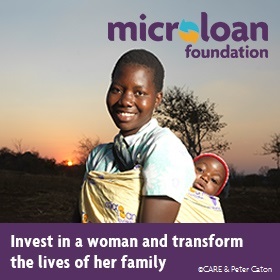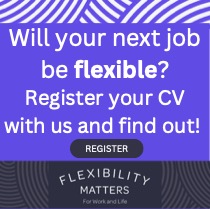Unlock smarter hiring decisions with assessments SaaS platforms
Hiring the best talent is tough but what if you had a smarter way to do it? Assessments SaaS platforms give you the power to make better hiring decisions by using data to measure real skills, not just resumes.
They save time, reduce bias, and help you find the right fit faster. Are you still relying on gut instinct to choose your next hire? Let’s explore how assessment tools can make your hiring smarter and more effective.
Define the role clearly
Knowing exactly what the role requires is the first step in making smarter hiring decisions. Clearly defining the job helps you choose the right assessments. You can list the skills, experience, and traits needed for success. This makes it easier to match candidates to the job.
A well-defined role also sets clear expectations for both the candidates and your team. It ensures you’re testing for the right skills and not wasting time on irrelevant qualities. When the role is clear, you make decisions with confidence. It leads to better, more focused hiring choices.
Choose the right assessment tool
Choosing the right tool is crucial for accurate hiring decisions. Look for a hiring assessment test that measures the specific skills required for the role. Whether it’s technical, creative, or soft skills, the right tool will give you the most relevant insights. This ensures you focus on what really matters during the hiring process.
The right assessment tool also helps save time and improve efficiency. It automates parts of the process and makes it easier to compare candidates. By selecting a tool that fits your needs, you can make smarter, data-driven decisions. This leads to better hires and stronger teams.
Align tests with job skills
Tests should directly reflect the skills needed for the job. For example, a technical role should include coding tests, while a customer service role may require communication assessments. Aligning tests with job skills ensures that you evaluate the most important traits. This helps you focus on what truly matters for the position.
When tests match the job, you can identify candidates who are the best fit. It makes the hiring process more efficient by filtering out those who don’t have the required skills. This leads to more confident and accurate decisions. Ultimately, it helps you build stronger teams.
Set up a smooth candidate flow
A smooth candidate flow makes the hiring process easier for everyone. Start by creating a clear path from application to assessment to interview. Keep the process simple and transparent, so candidates know what to expect. Clear instructions and quick communication help reduce candidate frustration. This creates a better experience for everyone involved.
When the flow is easy, candidates are more likely to stay engaged. They can focus on showing their skills, not navigating a confusing process. A smooth flow also helps your team stay organized and efficient. It speeds up hiring and reduces delays. In the end, it helps you make smarter, faster decisions.
Automate the screening process
Automating the screening process saves time and reduces workload. With the right tool, candidates can be automatically filtered based on their assessment results. This helps you quickly identify the most qualified applicants. It also ensures consistency in how every candidate is evaluated.
Automation removes human error and bias from the initial stages. It allows you to focus on the best candidates rather than manually sorting through resumes. This leads to a faster, more efficient hiring process. Automated screening helps you make smarter decisions with less effort.
Use data to compare candidates
Data allows you to compare candidates based on their real abilities. With assessments, you get a clear picture of their skills and strengths. This makes it easier to rank candidates objectively. You can quickly see who fits best for the role.
Using data removes any guesswork from the process. It gives you facts to guide your decision-making. This helps you choose candidates based on actual performance, not assumptions. Data-driven comparisons lead to smarter and more confident hiring choices.
Cut bias with objective scoring
Objective scoring helps you evaluate candidates fairly. It ensures decisions are based on measurable skills, not personal feelings. By using clear criteria, you can compare candidates without bias. This approach creates a level playing field for all applicants.
With objective scoring, you remove human judgment from the early stages of hiring. It helps you focus on what really matters-skills and performance. This leads to more consistent, fair, and accurate decisions. In the end, it supports smarter hiring choices.
Combine results with interviews
Assessment results provide valuable data, but interviews offer a personal touch. Combining both helps you see a complete picture of the candidate. While assessments show technical abilities, interviews reveal how well a person communicates and fits within the team.
By using assessment data to guide interview questions, you can focus on the most important areas. This approach ensures that you’re not only looking at skills but also at the candidate’s personality. It leads to smarter hiring decisions by balancing both objective data and personal insight.
Track performance post-hire
After hiring, tracking employee performance helps you understand how well your decision worked. By comparing their performance to assessment results, you can see if they meet expectations. This feedback is important for improving future hiring choices. It also helps you spot any skill gaps early on.
When you track performance, you get insights into the hiring process’s effectiveness. If an employee excels, it shows that your assessment tool was a good fit. If there are challenges, you can adjust your approach. Over time, this leads to smarter hiring decisions and stronger teams.
Keep improving your process
Constantly improving your hiring process helps you stay ahead. After each hire, review what worked and what didn’t. Look at the assessment data and compare it to employee performance. This allows you to make adjustments and fine-tune your approach.
By regularly refining your process, you can hire smarter every time. Small changes, like adjusting the assessments or interview style, can lead to better results. Over time, this makes your hiring process faster and more accurate. Continuous improvement ensures that you always find the best fit for your team.
All about smarter hiring decisions
Smarter hiring doesn’t have to be hard. With the right tools, you can find better talent, faster and more fairly. Assessments SaaS platforms make it simple to see who’s the best fit-backed by real data, not just gut feeling.




